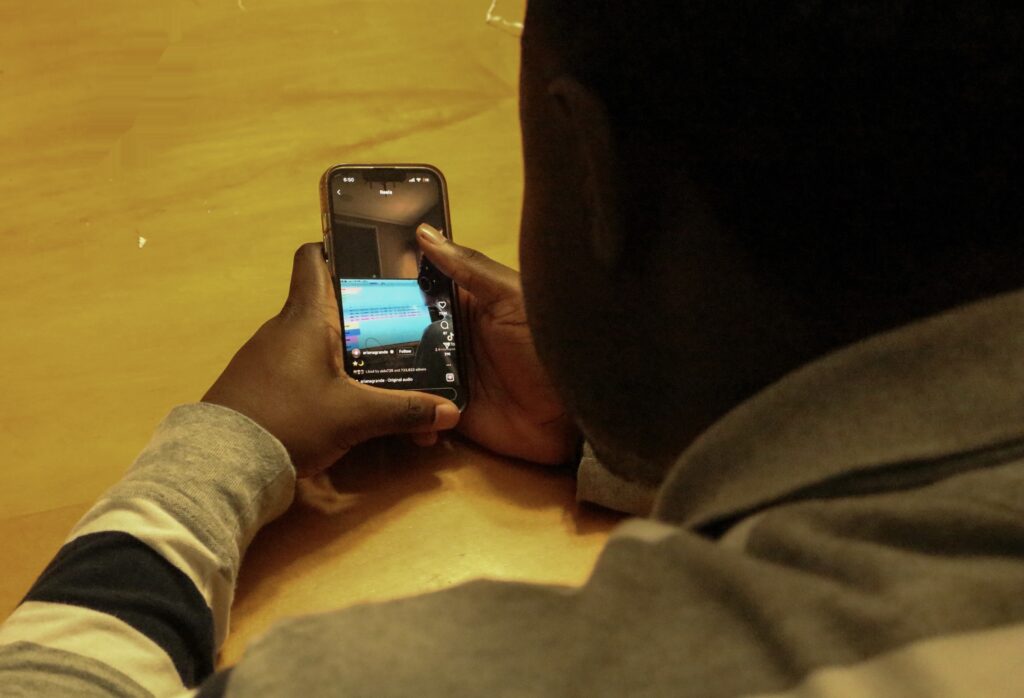Internet addiction is becoming increasingly prevalent and deserves more awareness and treatment
4 min read
We have a lot of technology at our fingertips, and it compels us to constantly check our phones to see what is in the media or what our family and friends are up to. | Russell Carver, The Weekly Ringer
KATY ROSE PRICE
Staff Writer
In light of ever-evolving internet usage, the issues associated with technology are becoming more extensive and severe as time goes on. To support the treatment and recovery of individuals who suffer from mental health issues that stem from the rise in technology usage in society, there should be a greater awareness brought to internet addiction.
The term “internet addiction” was first coined in 1995, and the first hospital-based internet addiction treatment center was established in 2013 at the Bradford Regional Medical Center in Pennsylvania, according to ABC News. The treatment center implemented digital detoxes and therapy as well as educational seminars to help the internet-addicted. From this, it’s clear that internet addiction was an issue then, and it only has grown in intensity since with the increased usage of technology in the past decade.
From flip phones to now having the answers to all of our questions in our pockets, the dynamic that we have with the internet has evolved drastically, and it has become an essential part of our daily lives. Senior art history major Enrique Crank-Brock said, “Technology is such a major aspect of my life that almost everything I do involves technology to one extent or another.”
With the world becoming increasingly reliant on technology, the negative consequences of spending too much time on a screen have become more evident. Internet addiction has become a widespread issue that can cause a decline in mental and physical health, according to an article from the journal Technology in Society.
Sophomore mathematics and computer science double major Katie Heyn conducted a research paper on computer ethics and how internet addiction can be detrimental to young adults’ mental health. “Internet addiction causes lots of issues for teens that want to fit in and connect with their peers, which means they are engrossed in their phones and not connecting with people on a personal, face-to-face level,” she said.
Having limitless access to media and content just a touch away offers endless opportunities to escape into another reality; however, there are risks involved with this unfettered access, especially for teens and young adults who have spent much of their lives interacting, socializing and communicating via screens and social media.
One of the factors behind internet addiction is the rewarding feeling that comes with likes, messages and notifications. Cognitive neuroscientists have found that positive social stimuli, like those we receive on social media platforms, result in a release of dopamine, which reinforces internet usage. “The short-term, dopamine-driven feedback loops that we have created are destroying how society works,” said Chamath Palihapitiya, the former vice president of user growth at Facebook, in an article by Harvard University’s Science in the News publication.
“Companies create algorithms that cause teens to be more addicted, TikTok being an example where they have algorithms that produce content that you want to see, which leads to the addiction because you want to keep watching,” Heyn said.
Overconsumption of the internet can take time away from completing schoolwork or fulfilling other responsibilities, which adds stress and anxiety to people’s lives. This ultimately creates an endless cycle of avoidance and guilt, which has detrimental effects on mental health and well-being, according to an article in the Journal of Depression and Anxiety.
However, even though the addictive pattern within internet usage is stark, internet addiction is not given the proper recognition or care that it deserves to be treated within the world of psychology.
Leading this trend is the DSM-5—the American Psychiatric Association’s Diagnostic and Statistical Manual of Mental Disorders—which is used by mental health professionals to diagnose mental disorders. Published in 2013 and updated in 2022, the manual does not include internet addiction in the official list of diagnoses but rather in the section that advises further research to be done on the topic. To ensure that people are getting the necessary help for internet addiction and other related modern-day disorders, the association should update the manual as soon as those findings are valid and reliable.
In a recovery story released by the Internet and Technology Addicts Anonymous, a member shared experiences and struggles with internet addiction in their work titled “The Only Thing That Worked.” The writer relayed their story about falling into internet addiction around the age of 15, which led them to isolate themselves from others. They wrote, “That was also the first time that I wanted to diminish my use of TV and computer but discovered that I couldn’t stop watching and playing. I was somehow glued to those machines.”
The member described the attempts they made to fight against internet addiction. “I blocked certain websites, sites with particular key words, and access in the evening and night. I kept the password at a different place,” they wrote. However, as these attempts proved to be futile, the writer described further steps they took in order to fight their addiction, such as quitting their job, moving in with their mother and not having their own computer for the first two years of recovery.
Such stories point to the need for a recognized diagnosis and increased awareness so that those affected may receive treatment.
An ideal example of a comprehensive treatment approach is South Korea’s facilities for internet addiction treatment. According to an NPR article about these facilities, “Almost 20% of the population—nearly 10 million people—are at serious risk of internet addiction, according to a 2018 government survey.” To combat this, government-sponsored programs have been established to screen for internet addiction and provide preventative care and addiction camps for severe cases. One of the camps started by the national government, the National Center for Youth Internet Addiction Treatment, accepts teenagers who are heavily dependent on their smartphones and the internet for a two- to four-week program. Upon leaving such programs, students are connected to institutions that can provide ongoing counseling.
Such programs need to become more widespread, but that can only happen with increased recognition and awareness of internet addiction.











